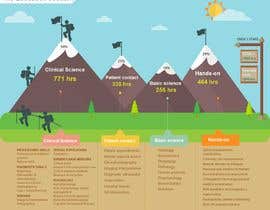Typical Daily Behaviors That Cause Back Pain And Tips For Avoiding Them
Typical Daily Behaviors That Cause Back Pain And Tips For Avoiding Them
Blog Article
Writer-Carstensen Landry
Keeping correct stance and avoiding typical challenges in daily tasks can dramatically impact your back health and wellness. From just how you rest at your workdesk to exactly how you raise hefty objects, tiny modifications can make a huge difference. Envision a day without the nagging neck and back pain that impedes your every action; the service may be simpler than you assume. By making a couple of tweaks to your daily routines, you could be on your way to a pain-free existence.
Poor Pose and Sedentary Lifestyle
Poor stance and a less active way of life are two significant factors to neck and back pain. When continue reading this slouch or hunch over while resting or standing, you placed unneeded stress on your back muscles and spine. This can cause muscle mass imbalances, tension, and at some point, chronic back pain. In addition, sitting for long periods without breaks or physical activity can weaken your back muscle mass and result in rigidity and pain.
To fight inadequate position, make a conscious effort to sit and stand up directly with your shoulders back and lined up with your ears. Remember to maintain your feet level on the ground and avoid crossing your legs for prolonged durations.
Including normal stretching and reinforcing exercises right into your day-to-day regimen can additionally aid boost your position and ease back pain associated with an inactive lifestyle.
Incorrect Training Techniques
Incorrect training techniques can dramatically add to pain in the back and injuries. When you lift hefty objects, keep in mind to bend your knees and utilize your legs to lift, as opposed to depending on your back muscle mass. Stay clear of turning your body while training and maintain the item near your body to reduce stress on your back. It's vital to maintain a straight back and prevent rounding your shoulders while raising to prevent unneeded pressure on your spine.
Constantly evaluate the weight of the things before raising it. If it's too hefty, request assistance or usage devices like a dolly or cart to transfer it safely.
Remember to take breaks during lifting jobs to give your back muscular tissues an opportunity to rest and avoid overexertion. By carrying out correct training methods, you can avoid back pain and decrease the danger of injuries, ensuring your back stays healthy and solid for the long term.
Absence of Regular Workout and Extending
A less active way of life lacking normal workout and extending can substantially contribute to neck and back pain and discomfort. When you don't engage in physical activity, your muscle mass come to be weak and inflexible, leading to poor stance and enhanced strain on your back. Routine exercise helps reinforce the muscle mass that sustain your spinal column, improving stability and lowering the risk of back pain. Integrating extending into your regimen can also improve flexibility, preventing rigidity and pain in your back muscle mass.
To stay clear of neck and back pain caused by an absence of exercise and stretching, go for at least 30 minutes of moderate exercise most days of the week. Include workouts that target your core muscular tissues, as a solid core can help ease pressure on your back.
Furthermore, take breaks to extend and move throughout the day, especially if you have a desk task. Easy stretches like touching your toes or doing shoulder rolls can aid soothe tension and protect against neck and back pain. Focusing on regular workout and stretching can go a long way in keeping a healthy and balanced back and decreasing discomfort.
Final thought
So, keep in mind to sit up right, lift with your legs, and remain active to prevent pain in the back. By making simple adjustments to your everyday practices, you can stay clear of the discomfort and restrictions that come with neck and back pain. your domain name with your spinal column and muscle mass by practicing excellent position, correct lifting methods, and routine exercise. Your back will certainly thank you for it!
